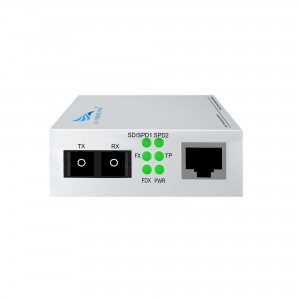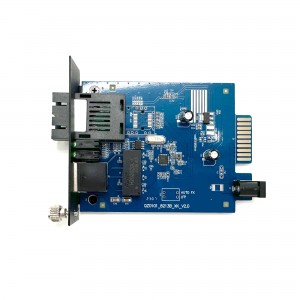10-port 10/100/1000M WDM Media Converter (Single-mode Single-fiber SC)
10-port 10/100/1000M WDM Media Converter (Single-mode Single-fiber SC)
Product Features:
Grandly launched the gigabit 8 optical 2 electrical single-mode single-fiber 3km A terminal, which is an advanced industrial optical fiber converter switch and PoE launched by Huizhou Changfei Optoelectronics Technology Co., Ltd., a leading manufacturer of industrial intelligent management, as an unmanaged optical transceiver Switches, Ethernet switches, wireless bridges and wireless 4G routers.
This cutting-edge product combines the functionality of fiber optic media converters and industrial fiber optic transceivers to provide seamless connectivity and efficient data transmission over long distances. Featuring high-speed gigabit capacity and designed for single-mode single-fiber networks, the device is ideal for industrial applications requiring reliable, high-performance communication solutions.
Gigabit 8 optical 2 electrical single-mode single-fiber 3km A end adopts a compact and strong iron shell design, which can withstand harsh environments. This ensures optimum functionality even in harsh industrial environments. Its solid construction guarantees long-lasting durability and user peace of mind.
The device features dynamic LED indicators that provide clear and intuitive status updates, making it easy to monitor network connections. Plug-and-play functionality eliminates the need for complicated installation or configuration, making it a user-friendly solution that saves time and effort. Just connect your device and go.
Gigabit 8 optical 2 electrical single-mode single-fiber 3km A end has become an important part of industrial network infrastructure with its unparalleled performance and reliability. It enables secure and efficient data transfer, ensuring smooth, uninterrupted operation of critical systems, increasing productivity and minimizing downtime.
Huizhou Changfei Optoelectronics Technology Co., Ltd. prides itself on providing high-quality network solutions that meet industry-specific needs. Their extensive expertise combined with innovative technology enables them to deliver products that meet the highest standards of performance and reliability.
To sum up, Huizhou Changfei Optoelectronics Technology Co., Ltd.’s gigabit 8-optical 2 electrical single-mode single-fiber 3km A-end is currently the most advanced industrial optical fiber transceiver. Its easy-to-use plug-and-play functionality, robust steel design and informative LED indicators make it an excellent choice for industrial applications. Trust the reliability and efficiency of this product to seamlessly integrate with your network infrastructure and take productivity to new heights.
Technical Parameter:
|
Model |
CF-8012GSW-3A | |
| Interface Characteristics | ||
|
Fixed Port |
2* 10/ 100/ 1000Base-T RJ45 port 8* 1000Base-X uplink SC fiber port |
|
|
Ethernet Port |
10/ 100/ 1000Base-T auto-sensing, full/half duplex MDI/MDI-X self-adaption |
|
|
Twisted Pair Transmission |
10BASE-T: Cat3,4,5 UTP(≤100 meter) 100BASE-T: Cat5e or later UTP(≤100 meter) 1000BASE-T : Cat5e or later UTP(≤100 meter) |
|
| Optical Port | Default optical module is single-mode single-fiber 3km, SC port | |
| Wavelength/Distance | A-end: RX1310nm / RX1550nm 0 ~ 40KM
B-end:RX1550nm/ RX1310nm 0 ~ 40KM |
|
| A-end: RX1490nm / RX1550nm 0 ~ 120KM
B-end:RX1550nm/ RX1490nm 0 ~ 120KM |
||
| Chip Parameter | ||
| Network Protocol | IEEE802.3 10BASE-T, IEEE802.3i 10Base-T,
IEEE802.3u 100Base-TX, IEEE802.3u 100Base-FX, IEEE802.3x IEEE802.3ab 1000Base-T;IEEE802.3z 1000Base-X; |
|
|
Forwarding Mode |
Store and Forward(Full Wire Speed) |
|
|
Switching Capacity |
20Gbps |
|
|
Buffer Memory |
14.88Mpps | |
|
MAC |
2K | |
|
LED Indicator |
Fiber | FX1-FX8 |
| On the RJ45 seat | 1X-2X Yellow:Indicate PoE | |
| 1X-2X Green: Indicates network working status | ||
| Power | PWR (green) | |
| Power | ||
| Working Voltage |
AC:100-240V |
|
|
Power Consumption |
Standby<3W, Full load<10W |
|
|
Power Supply |
DC:5V/2A industrial power supply |
|
| Lightning protection &Certification | ||
| Lightning protection | Lightning protection: 4KV 8/20us, Protection level: IP30 | |
| Certification | CCC;CE mark, commercial; CE/LVD EN60950;FCC Part 15 Class B; RoHS | |
| Physical Parameter | ||
| Operation TEMP | -20~+55°C;5%~90% RH Non condensing | |
| Storage TEMP |
-40~+85°C;5%~95% RH Non condensing |
|
| Dimension (L*W*H) | 220mm* 101mm*28mm | |
| Installation | Desktop | |
Product Size:
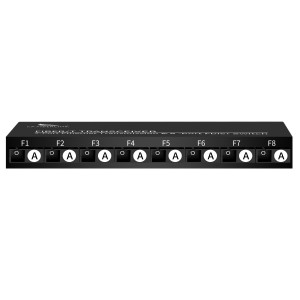
product application diagra:

How to choose a fiber optic transceiver?
Optical fiber transceivers break the 100-meter limitation of Ethernet cables in data transmission. Relying on high-performance switching chips and large-capacity caches, while truly achieving non-blocking transmission and switching performance, they also provide balanced traffic, isolation and conflict. Error detection and other functions ensure high security and stability during data transmission. Therefore, fiber optic transceiver products will still be an indispensable part of actual network construction for a long time. So, how should we choose fiber optic transceivers?
1. Port function test
Mainly test whether each port can work normally in the duplex state of 10Mbps, 100Mbps and half-duplex state. At the same time, it should be tested whether each port can automatically select the highest transmission speed and automatically match the transmission rate of other devices. This test can be included in other tests.
2. Compatibility test
It mainly tests the connection ability between the optical fiber transceiver and other devices compatible with Ethernet and Fast Ethernet (including network card, HUB, Switch, optical network card, and optical switch). The requirement must be able to support the connection of compatible products.
3. Cable connection characteristics
Test the fiber optic transceiver’s ability to support network cables. First, test the connection ability of Category 5 network cables with lengths of 100m and 10m, and test the connection ability of long Category 5 network cables (120m) of different brands. During the test, the optical port of the transceiver is required to have a connection capability of 10Mbps and a rate of 100Mbps, and the highest must be able to connect to a full-duplex 100Mbps without transmission errors. Category 3 twisted pair cables may not be tested. Subtests can be included in other tests.
4. Transmission characteristics (transmission loss rate of data packets of different lengths, transmission speed)
It mainly tests the packet loss rate when the optical fiber transceiver optical port transmits different data packets, and the connection speed under different connection rates. For the packet loss rate, you can use the test software provided by the network card to test the packet loss rate when the packet size is 64, 512, 1518, 128 (optional) and 1000 (optional) bytes under different connection rates. , the number of packet errors, the number of packets sent and received must be more than 2,000,000. Test transmission speed can use perform3, ping and other software.
5. The compatibility of the whole machine to the transmission network protocol
It mainly tests the compatibility of fiber optic transceivers to network protocols, which can be tested in Novell, Windows and other environments. The following low-level network protocols such as TCP/IP, IPX, NETBIOS, DHCP, etc. must be tested, and the protocols that need to be broadcast must be tested. Optical transceivers are required to support these protocols (VLAN, QOS, COS, etc.).
6. Indicator status test
Test whether the status of the indicator light is consistent with the description of the panel and the user manual, and whether it is consistent with the current status of the fiber optic transceiver.








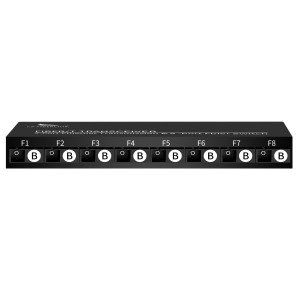
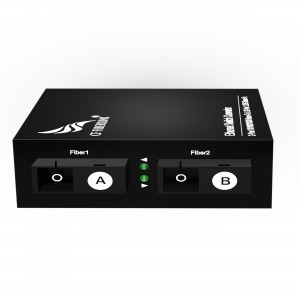
2-300x300.jpg)
